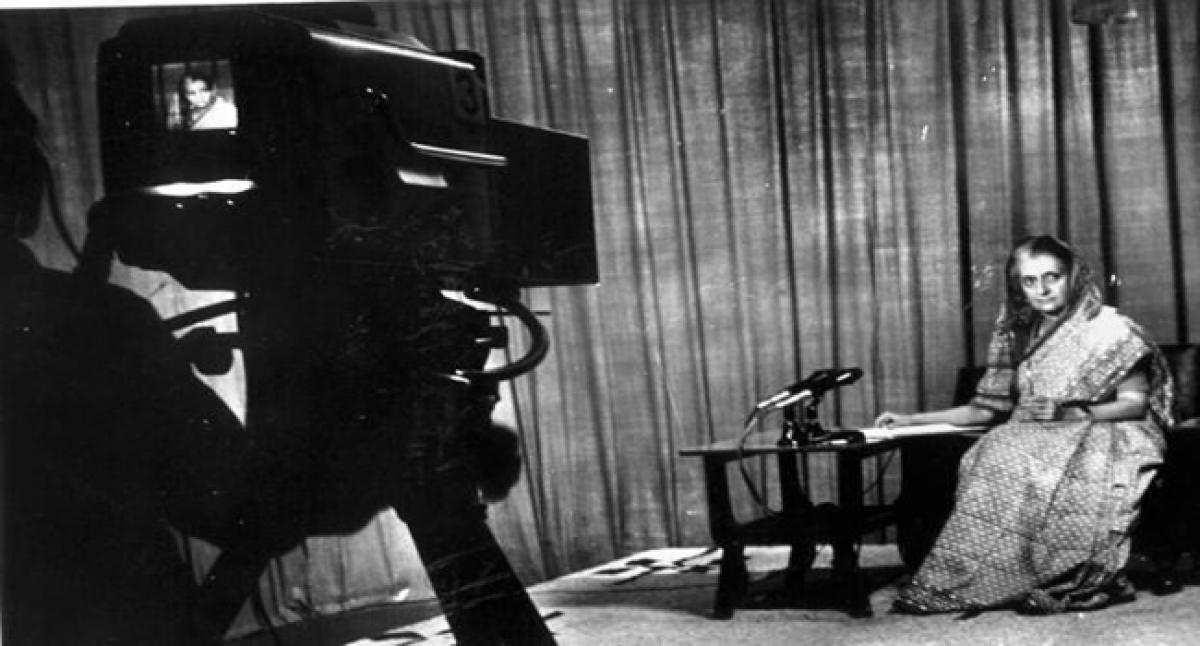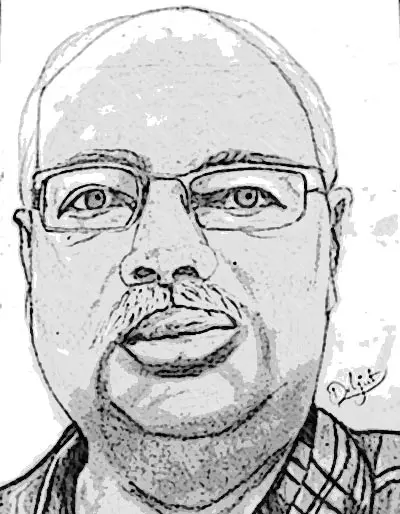Live
- Two Russian oil tankers with 29 on board damaged due to bad weather
- Telangana's Traditions Will Be Protected, Village by Village : BRS Leader MLC K. Kavitha
- Uganda to relocate 5,000 households from landslide-prone areas in eastern region
- Harish Rao Criticizes CM Revanth Reddy: "His Time is Over"
- Vijay Sethupathi Hails 'Vidudala-2' as a Theatrical Game-Changer
- Sahaj Yog: A Path to Inner Transformation and Harmony City takes giant strides
- Allu Arjun meets his uncle Nagababu at his residence
- J&K L-G felicitates Langar organisations & NGOs for contribution during Amarnath Yatra
- Hit by Covid, MP's Rakesh Mishra sees revival of his fortunes, courtesy PM SVANidhi scheme
- Trailblazing Yakshagana Artiste Leelavathi Baipaditthaya No More
Just In

June 25, 1975 was the day when internal Emergency was clamped by a belligerent Indira Gandhi, the then prime minister. It was to stay till March 21, 1977.
June 25, 1975 was the day when internal Emergency was clamped by a belligerent Indira Gandhi, the then prime minister. It was to stay till March 21, 1977.
It all began with Justice Jaganmohan Sinha of Allahabad High Court finding her guilty of corrupt electoral practice on June 12 1975. The judge held her election to the Lok Sabha as null and void and barred her from contesting elections for six years. On a plea by her lawyer, the judge stayed his own order for 20 days to enable her to go in for appeal.
The Congress Party staged a series of rallies in support of their undisputed leader outside her residence. The biggest rally was held on June 20 and for this the Delhi administration and the Delhi Police commandeered 1700 buses while the railways ran special trains from the country’s nook and corner.
Since all buses were forcibly requisitioned for the rally, citizens of Delhi had to do without public transport that day. The Supreme Court granted conditional stay on the High Court order, which barred Indira Gandhi from participating in debates or voting in Parliament and referred the matter to a larger Bench of the Court.
Unwilling to accept the judicial verdict, she made President Fakruddin Ali Ahmed issue a proclamation under Article 352 of the Constitution imposing an ‘internal emergency’.
The Constitution was mutilated, Parliament was reduced to a rubber stamp and the media was gagged. Even the judiciary failed to stand up to the tyrannical regime.
During the 19-month Emergency, Ms Gandhi behaved like a dictator. By a stroke of pen she had taken away civil liberties. She ostensibly took such a drastic measure because ‘there was grave threat to national security and prevalence of adverse economic conditions’.
On orders of her son Sanjay Gandhi, who was to become an extra-constitutional authority, electricity was cut-off on New Delhi’s Fleet Street – Bahadurshah Zafar Marg- to prevent publication of newspapers the next morning while Union Home Ministry imposed censorship on newspapers.
Ministry of Information and Broadcasting, helmed by Sanjay’s ‘yes man’ Vidya Charan Shukla, hurriedly created a team of censor officers and all newspapers were asked to submit their pages to them for clearance before publication.
Indian Express, then headed by Ramnath Goenka, and The Statesman, dared to defy and put front pages blank. The Censor wanted to kill newspapers by delaying approvals. Most of the time innocuous stuff like cookery items used to appear as no political news was permitted, a la Communist-led China and Russia.
Anyone who spoke against the government was put behind bars. A new act, MISA (Maintenance of Internal Security Act) was enacted through an ordinance to arrest such people. The word was amongst the most dreaded ones around that time.
Several leaders like Lok Nayak JP Narayan, Atal Bihari Vajpayee and LK Advani and socialist leaders such as Shyam Nandan Mishra, Subramaniam Swamy and Madhu Dandavate were sent to jail on June 26.
With so many political luminaries put in the same jail, Bangalore became an important point to the movement that was to oppose Indira Gandhi. A hundred thousand people languished in prison. In short a vibrant Indian democracy was reduced to shambles like the Pol Pot regime at Cambodia.
One of the darkest features of the Emergency was the forcible sterilisation on Sanjay Gandhi’s order. Meanwhile sycophancy was at its worst. Dev Kant Barooah, President of the Congress Party unabashedly declared “Indira is India, India is Indira”.
Pranab Mukherjee in his book The Dramatic Decade: The Indira Years observes, ‘I was in Calcutta for my Rajya Sabha election, scheduled for 26 June. I got to the Assembly building at about 9.30am.
It was teeming with state legislators, ministers and political leaders, some with questions and others with conspiracy theories. Some went to the extent of suggesting that, a la Mujibur Rahman of Bangladesh, Indira Gandhi had abrogated the Constitution and usurped power for herself, with the army in tow. I corrected these prophets of doom, saying that the Emergency had been declared according to the provisions of the Constitution rather than in spite of it.”
Unable to brave the nationwide fury any longer and wilting under the gathering storm, a semblance of order was restored when Indira Gandhi, sought to achieve justice from the people’s court by calling for general elections in March 1977. She was routed.
The emergency should be remembered for all the horrors it inflicted on the people of that generation. These memories should be told and retold to make people understand the importance and value of democracy and protection of fundamental rights in true spirit of democracy

© 2024 Hyderabad Media House Limited/The Hans India. All rights reserved. Powered by hocalwire.com







